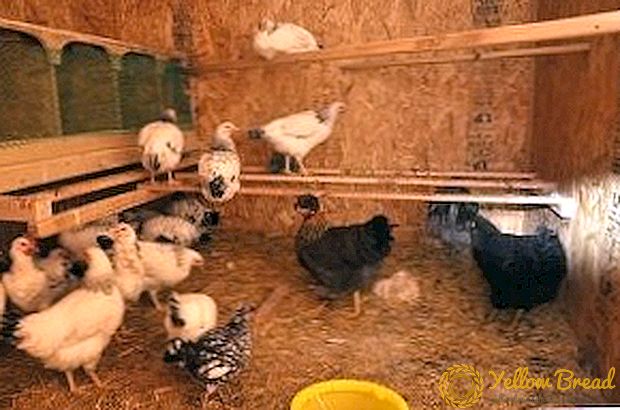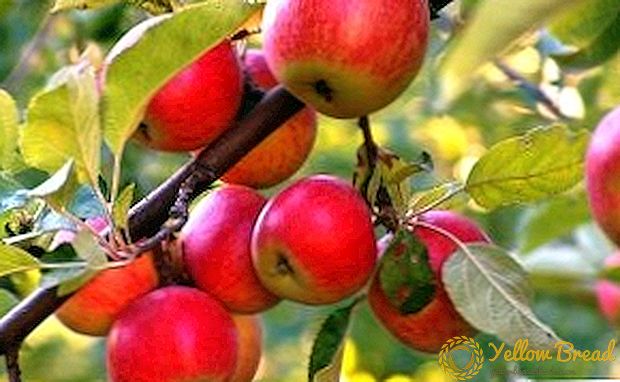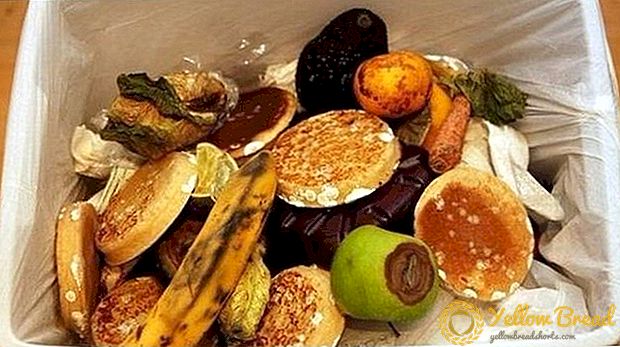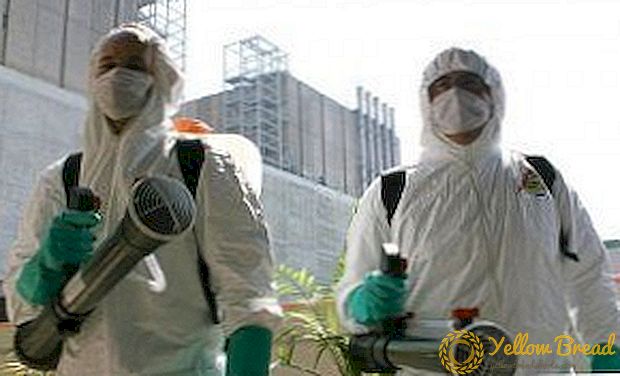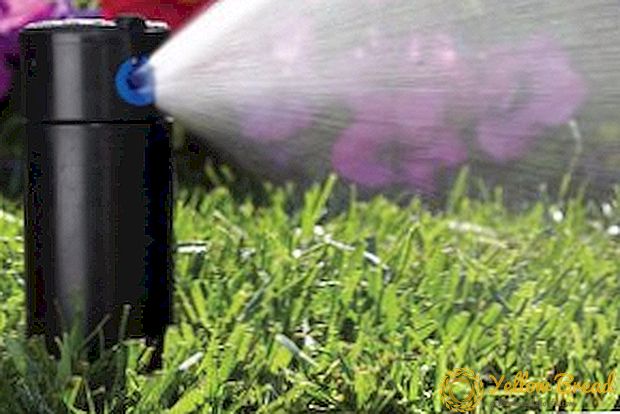 Groundwater flows do not provide normal soil moisture for high-quality grass growth. Therefore, without human participation can not do. Watering is directly related to the metabolism of plants.
Groundwater flows do not provide normal soil moisture for high-quality grass growth. Therefore, without human participation can not do. Watering is directly related to the metabolism of plants.
Health, attractiveness and strength of the lawn are dependent on the frequency of irrigation activities. Manual or automatic watering - for grass is not so important. The difference is: how much money, time and effort you are willing to spend on it. How to water the lawn after sowing and what method for this to choose, we consider in this article.
- When to water?
- Water requirements
- Irrigation methods
- Drip irrigation
- Sprinkling
- Subsoil irrigation
- How much water?
When to water?
Start watering the lawn should be immediately after sowing rain method. After sprouting, it is much easier to determine the frequency of irrigation. As soon as the grass gets a slightly dull shade and becomes less elastic - start the next watering.
 Evening is also not the best time of day for irrigation, despite the lower degree of evaporation of moisture. Evening watering is allowed only in summer, when at night the air temperature is slightly lower than daytime.
Evening is also not the best time of day for irrigation, despite the lower degree of evaporation of moisture. Evening watering is allowed only in summer, when at night the air temperature is slightly lower than daytime.An ideal option for irrigation activities is morning. It is necessary to finish watering before 9-10 hours, so that the lawn has time to dry before noon, and then the heat will not harm it.
Water requirements
It is necessary to pay attention to the temperature of the irrigation water. It is not recommended to water the grass directly from a well or well. Temperatures below 10 ° C shock the root system of the plant. With manual irrigation, water will have to be pre-settled in special tanks.  Much easier if you own an automatic lawn irrigation system. The water from the well, entering under pressure, manages to warm up to air temperature before contact with weed and soil.
Much easier if you own an automatic lawn irrigation system. The water from the well, entering under pressure, manages to warm up to air temperature before contact with weed and soil.
Irrigation methods
As it is known, soil moistening up to 10 cm in depth is considered optimal for a lawn. Here come to the aid of various methods of irrigation.
Watering the lawn is carried out in three main ways:
- basal;
- ground level;
- sprinkling.
Drip irrigation
Drip irrigation refers to the automatic systems of radical lawn irrigation. For this method, hoses with small holes are used, from which droplets of water flow directly onto the ground. The drip system is almost completely hidden from the human eye.
 Radical hydration can be used not only in the morning, but also in the daytime. It saves time, water consumption and minimizes human participation. The main disadvantage of this method of irrigation is the complexity of the installation process. But soon all the cash and labor costs for drip watering the lawn completely pay for themselves.
Radical hydration can be used not only in the morning, but also in the daytime. It saves time, water consumption and minimizes human participation. The main disadvantage of this method of irrigation is the complexity of the installation process. But soon all the cash and labor costs for drip watering the lawn completely pay for themselves.Sprinkling
Sprinkling is an imitation of rain for irrigating lawn grass. Small areas of plantings have enough manual watering from a sprayer of a watering can or a hose. If the area is too large, it is advisable to install automatic sprinklers.  During sprinkling, not only the soil is moistened, but also the air around the lawn. Main types:
During sprinkling, not only the soil is moistened, but also the air around the lawn. Main types:
- medium-intensity rotary sprinkler for medium-sized lawns and flowers;
- static - to create intense rain;
- micro irrigation for small irrigation;
- rotary - for periodic soil moistening with small irrigation rates and intensity;
- pulsed - for irrigation in small portions and intensity.




This irrigation view requires a water source like a faucet or pump. In addition, you will need sprinklers and hoses. In terms of costs, manual sprinkling is the most affordable among all methods. For automatic watering the lawn, you need to purchase sprinklers.
They are also divided into types: stationary and portable. Their sprinklers can also be different: simple and mobile. The former irrigate the surrounding soil unevenly, which is completely excluded if the sprinkler is capable of changing its position.  With good pressure in the system, a pulsating type of sprinklers is perfect, allowing water to be absorbed more slowly into the soil. More expensive type - retractable. It does not prevent mowing the lawn, as it is compactly hidden in the grass. For irrigation sprinkler lifted and works on the same principle as the other species. In any case, sprinkling is not as expensive as drip irrigation.
With good pressure in the system, a pulsating type of sprinklers is perfect, allowing water to be absorbed more slowly into the soil. More expensive type - retractable. It does not prevent mowing the lawn, as it is compactly hidden in the grass. For irrigation sprinkler lifted and works on the same principle as the other species. In any case, sprinkling is not as expensive as drip irrigation.
Subsoil irrigation
Intra-soil irrigation method is the most economical and expensive type. The irrigation system delivers water directly to the root lawn system and is suitable for placement on any terrain. But it is necessary to plan its installation and layout in advance.
 Intra-soil irrigation has a number of advantages, such as:
Intra-soil irrigation has a number of advantages, such as:- soil air saturation;
- obstruction of weed growth;
- reduction of humidity of the surface air layer;
- protection against the development of fungal diseases in lawn grass;
- the ability of a person to perform planned activities on the lawn during watering.
This irrigation method is mainly used in greenhouses, greenhouses and slopes. Subsurface watering is the most costly among all the species in terms of monetary, labor and time resources.  Irrigation measures for lawns ensure its attractiveness and normal existence. If you do not have enough free time for this, it is better to install an automatic irrigation system. In addition to your time, it saves water resources and provides better soil moisture. But the manual irrigation method is notoriously less expensive. Although sometimes saving is not appropriate.
Irrigation measures for lawns ensure its attractiveness and normal existence. If you do not have enough free time for this, it is better to install an automatic irrigation system. In addition to your time, it saves water resources and provides better soil moisture. But the manual irrigation method is notoriously less expensive. Although sometimes saving is not appropriate.
How much water?
The amount of water needed by lawn grass depends not only on its variety, but also on the state of the growing soil, as well as climatic conditions. Remember, frequent low-dose irrigation does more harm to the lawn than rarer but abundant. The top layer of soil should have time to dry before the start of a new watering. Usually the lawn needs irrigation from 3 to 4 times during the hot summer week. 
The exact consumption of water resources can only be determined independently by the appearance of the plants. Dried, dehydrated (does not restore the appearance after damage in the form of traces), folded grass and its pale color indicate poor-quality irrigation.

